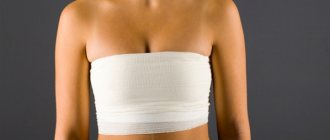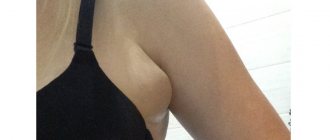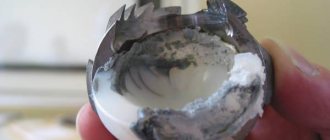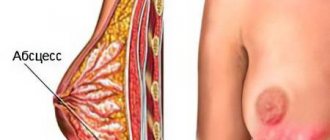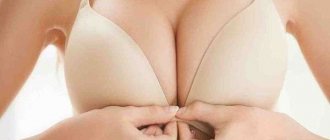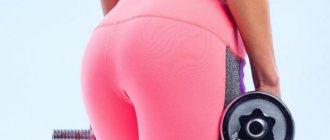How long after breast augmentation should you not get pregnant, how implants affect breastfeeding and how reduction differs from lifting
More than 70% of women are dissatisfied with the shape and size of their breasts. This is evidenced by data from a survey of British scientists among 20 thousand women from 40 countries. At the same time, not everyone dreams of more curvaceous figures - 23% of girls would like to reduce their size. Olga Mishutkina, a plastic surgeon and mammologist at Barnaul City Hospital No. 11, told Tolk whether implants can increase the risk of cancer, in what cases ruptures occur and why Angelina Jolie had her breasts removed.
How are implants and oncology related?
Discussions about whether implants can cause breast cancer have been going on for a long time, says the doctor. Research conducted by scientists and doctors since the late 1980s suggests that there is no connection between breast enlargement and cancer. Moreover, observations have shown that women who have implants have a lower risk of developing cancer.
“It cannot be said that having implants prevents the development of cancer. The research data can be explained by the fact that women who decide to install implants and invest a lot of money in their breasts more often visit a mammologist, have an ultrasound scan and carefully monitor their health,” explains the surgeon.
Capsular contracture
Capsular contracture
Capsular contracture is one of the most common complications. It is expressed in the formation of a capsule of connective (scar) tissue, which compresses the installed endoprosthesis and causes compaction and pain in the chest; the capsule begins to be palpated. The occurrence of this complication can occur at various times after mammoplasty.
Fibrous tissue itself, in one volume or another, inevitably forms around the implant. Most often, partial resection is sufficient. But if the pain from compression is too severe, and also if the implant area is excessively compacted, the endoprosthesis will have to be removed and the capsular tissue excised. Only after this is it possible to re-install the implant.
It is believed that implants with a rough surface significantly reduce the risk of such a complication.
Angelina Jolie is not the first
June 22, 7:27
“We are not cutters”: a plastic surgeon - about the request “like Jolie” and the difference in price
Why going to Moscow for new breasts is no longer relevant, what are the features of male plastic surgery and what you definitely won’t be able to change about yourself
About 10 years ago, Angelina Jolie had her breasts removed and implants inserted for preventive purposes - she had a very high risk of developing cancer. This operation - subcutaneous mastectomy - has been performed in Barnaul for several years now.
“Angelina Jolie once drove everyone crazy with this operation. In fact, she was not the first. For example, in Barnaul such operations have been performed for more than 20 years,” the specialist commented.
Such operations are performed for certain indications: a high risk of inherited cancer, the presence of multiple benign tumors, and even treated distant cancer in the adjacent breast.
“There are times when a patient, who has already had one breast removed due to cancer, asks to have the second one removed out of fear. This puts a lot of moral pressure, and women want to play it safe,” explains the doctor.
We do not perform such operations free of charge within the framework of compulsory medical insurance.
Legal basis
Breast reconstruction is included in the list of types of high-tech medical care (HTMC) under compulsory health insurance. According to the Decree of the Government of Russia dated December 19, 2016, number 1403, every woman who has indications for reconstructive surgery to restore the mammary gland can receive it free of charge under the compulsory medical insurance policy. [1], (page 40)
Currently, free reconstructions are carried out not only by municipal specialized healthcare institutions, but also by many private clinics. To receive a quota for this medical service, a woman must contact her attending doctor and provide him with all the necessary documents, in accordance with paragraph 13 of Order of the Ministry of Health of the Russian Federation dated December 29, 2014 No. 930 n. [2], (point 14)
The justification for referring a patient who has undergone partial or complete removal of the mammary gland to reconstructive surgery is determined by a medical commission. Where exactly breast reconstruction will be performed under compulsory medical insurance is decided by the woman based on the provided list of authorized medical organizations by specialists from the regional Ministry of Health. [2], (point 11)
Reconstructive plastic surgery
The Altai Territory has a very high incidence of breast cancer. And women most often come to the surgeon without breasts, after a mastectomy.
According to statistics, about 30% of women with breast cancer have their breasts completely removed. 70% of patients manage to save it: they have the tumor removed at the same time and the mammary gland is reconstructed.
Often women turn to an oncologist already with the third or fourth stages of cancer, so there is nothing left but to completely remove the breast. Preservation of at least part of the mammary gland is possible only in the first or second stages of cancer.
In total, about 3% of the total number of operations are reconstructive plastic surgery (personal statistics of Olga Mishutkina).
Rehabilitation period, contraindications
The rehabilitation period depends on the reason for re-endoprosthetics.
As a rule, if the endoprostheses were installed correctly and the replacement of implants is dictated only by aesthetic considerations, then the existing bed that was made during the first installation only needs to be corrected depending on the shape and size of those endoprostheses that will replace the old ones . As a result, the rehabilitation period will be either the same or even easier.
If re-endoprosthetics is performed due to complications, then the re-operation, on the contrary, is usually more traumatic and time-consuming. Accordingly, the rehabilitation period increases. Most often this is due to the need to excise capsular contracture, after which it is necessary to form a new pocket for the implant, etc.
Final recovery after repeated surgery takes several months, during which baths, saunas, solariums, and hot baths are prohibited. Active sports are also prohibited until the tissues have completely healed.
As for the contraindications for re-installation of implants, they are the same as for the initial installation: pregnancy and lactation, chronic diseases in the acute stage, acute infectious and inflammatory processes in the body, neoplasms in the mammary glands, mastitis, etc.
Indications and contraindications
June 24, 7:27
Five years wearing a mask: one beauty procedure ruined the life of a woman from Barnaul
The woman’s problems began almost 10 years ago, when she came to a beauty salon in the hope of regaining her youth. Now she only leaves the house wearing a mask.
Some conditions, such as cysts (fibrocystic disease), may even disappear after breast augmentation surgery. It works as follows: most often, cysts form after breastfeeding, during which the milk duct expands. If a doctor places an implant under the breast tissue or under the pectoral muscle, it begins to put pressure on the glandular tissue. As a result, the milk duct narrows and the cyst can “evacuate” on its own.
Cysts, even multiple ones, are not a contraindication for endoprosthetics, says the doctor.
“Hospital No. 11 operated a mammology center for a long time; we were the first in Barnaul with such a profile, and we have our own research. They say that breast cysts decrease after implant installation,” says the specialist.
As for fibrosis - benign tumors - they are also not a contraindication to surgery. After cancer is ruled out, the tumor is removed during surgery and then implants are placed.
FDA asks to recall some implant models
On July 24, 2020, the FDA asked pharmaceutical company and manufacturer Allergan to recall certain models of its textured breast implants in response to more than 573 cases of BIA-ALCL (a rare form of blood cancer that have been linked to products worldwide—481 attributed specifically to Allergan implants ). A theory has emerged that Allergan implants cause cancer.
At the request of the FDA, Allergan announced that it will recall its Biocell textured breast implants worldwide, including the Natrelle silicone-saline-filled implants, Natrelle Inspira implants and Natrelle 410 implants.
The move comes after the company's textured implants were withdrawn from the market in Europe last December and from the Canadian market in May.
Australia also suspended sales of textured implants from Allergan, as well as other manufacturers such as Johnson & Johnson, earlier this month because the implants may also cause cancer.
At this time, the FDA does not recommend removing or replacing such implants in patients who are asymptomatic, but anyone who has reason to believe that their textured implants are causing problems (may cause cancer) should contact a plastic surgeon immediately.
In the early stages of BIA-ALCL, removal of the implants (with the option of replacement with smooth implants) is the only treatment women need.
Cases where it has spread to lymph nodes or other tissues require chemotherapy and radiation.
It also added that the disease can take years to manifest itself, with "on average most patients appearing within 8 to 10 years."
No matter what type of implant you have, pay close attention to breast swelling or pain, which may be signs of BIA-ALCL.
Rippling or folding can occur if the capsule of tissue covering the implant adheres to the surface, or if the pocket for the implant was too large, which could make it more likely to dislodge.
This is most noticeable in thin women without much tissue, and is especially likely if their implants are large.
Anti-ripple treatment is revision surgery, sometimes using an acellular dermal matrix (ADM) or synthetic surgical mesh to provide additional support and prevent sticking.
The FDA is currently evaluating, but has not yet approved, the use of mesh in breast augmentation and reconstruction. We do not yet have data on the effect of mesh on complications over time.
Breastfeeding and silicone
After endoprosthetics, you should not become pregnant for about six months, otherwise the shape of the breast may change for the worse. Then there are no restrictions. You can breastfeed with implants, says the doctor.
“The operation does not damage the function of the mammary gland either anatomically or physiologically. To maintain your shape during pregnancy, you should wear comfortable compression garments throughout the entire period of bearing a child and while breastfeeding. It is also important to monitor your weight. Among my patients there are those who, after endoprosthetics, gave birth to three children, and their breasts still look good; they did not undergo a second operation,” says Olga Mishutkina.
Reconstruction with tissue expanders and implants
Tissue expanders with a built-in port (valve)
This is the most commonly used technique for breast reconstruction in women after a mastectomy. It is also called breast endoprosthetics and is usually performed in two stages. A permanent breast implant, which is used in reconstruction, usually cannot be placed in place of a removed breast when a mastectomy is performed. If the implant is placed under the skin immediately after removal of the mammary gland, this will not give the desired cosmetic effect and may lead to its loss through the surgical suture or through the skin.
To avoid this, immediately after the end of the mastectomy, a tissue expander is installed in a specially created pocket under the skin and pectoral muscle - a silicone balloon filled with saline solution (sterile 0.9% NaCl solution). This balloon has a valve that allows the surgeon or nurse to inject additional volumes of solution over a period of time (weeks to months) in an outpatient setting. This allows the muscles and skin to be stretched to the required size to accommodate a permanent implant. Once stretching is achieved, the second stage is to replace the tissue expander with a permanent implant.
Implants are classified according to the substance they are filled with (silicone or saline), surface (smooth or textured), shape (round or teardrop-shaped), and size. Breast reconstruction with implant-based arthroplasty is best suited for women who:
- with small and medium-sized breasts;
- minimal ptosis (sagging) of the breast;
- if they have a good condition of the skin-fat flap after mastectomy;
- if a bilateral mastectomy has been performed (simultaneous removal of two glands).
Women who are obese, have large breasts, who smoke, and who have received radiation therapy to the breast are at high risk of being dissatisfied with the results of this reconstruction method.
Silicone implants
Silicone Implants
US data for 2008 showed that implants accounted for approximately 60% of all breast reconstructions performed that year and autologous reconstruction accounted for 40%. Moreover, in the previous year it was the other way around. The reason for this inversion is multifactorial. One of them, for example, is an increase in the proportion of bilateral mastectomies. In addition, the proportion of women younger than 49 years of age who underwent breast reconstruction in 2008 was higher than the proportion of women older than that age. Young girls are more likely to undergo endoprosthetics with an implant, since they are less likely to have enough graft material to perform autologous reconstructions than older girls, and they often prefer to avoid the possible long recovery period for graft engraftment.
Lift or reduction?
If the breasts are sagging and a woman is no longer satisfied with their shape, a breast lift can be done. Doctors work only with the skin, and do not touch the gland tissues themselves. After a breast lift, the breasts retain their beautiful shape for quite a long time. And even breastfeeding, provided all conditions are met (compression garments and normal weight), does not particularly affect its shape.
However, this is an individual question: no one can promise that breasts will retain their shape forever after a lift. Repeat surgery may be required.
Reduction – breast reduction – is one of the most difficult operations in mammoplasty. Doctors recommend stopping breastfeeding after such an intervention. The fact is that during reduction, the doctor removes part of the glandular tissue, and the ducts may be damaged. The milk may arrive, but there will be nowhere for it to go, and this is fraught with serious complications, the doctor explains.
Complications of mammoplasty
You can read about the side effects of mammoplasty that occur during the rehabilitation period after surgery in the form of sensory disturbances, infections, hematomas, and others in the article “Complications after breast augmentation.” Only after complete recovery and elimination of the infectious process, tissue necrosis, etc. repeat endoprosthesis replacement is possible (removal of the breast implant followed by replacement). However, there are consequences that most often appear after a long time, which is why the implants need to be removed or replaced.
Why do implants rupture?
Implant rupture is the result of strong physical impact. For example, a blow. However, implant replacement is not always required urgently.
“One of my patients had an implant rupture after a fall from a height, but the connective tissue capsule that forms around the implant during the rehabilitation period remained intact. In addition, modern implants do not leak and do not saturate tissues. Therefore, we decided to wait until the fall,” the doctor commented.
A connective tissue capsule is formed from your own connective tissue around the implant during two months of rehabilitation. The body “envelops” the foreign element like a dense bag. This capsule is thin, but quite durable.
They leak
And there was a study about this (1). Even if the implant has not been damaged, the silicone will leak out. Although many plastic surgeons assure that this will not happen, the Internet is full of videos where even a new, just removed implant “sticks” to everything.
They can also say that the capsule formed around the implant prevents the silicone from leaking into other parts of the body. However, this “capsule” consists of scar tissue and does not prevent the penetration of various substances, which then lead to health disorders.
Indications for breast replacement
- desire to increase or decrease breast size;
- change in breast shape (stretching of the mammary glands, displacement of the implant, etc.) as a result of sudden fluctuations in weight, pregnancy or age-related changes;
- replacement of a previously installed (outdated) implant with a more modern analogue. Typically, patients who performed augmentation mammoplasty 10-25 years ago come to us. Today, implant manufacturers give them a lifetime warranty;
- development of capsular contracture – thickening of the shell around the implant;
- replacement of a damaged implant as a result of injury, accident or during the initial installation.
Individual consultation
Thank you for your request. Your application is accepted. Our specialist will contact you shortly
Implant replacement
If you are dissatisfied with the result of a previous operation and the aesthetic result does not meet your expectations, you can resort to re-endoprosthetics - replacement of implants. The operation to replace breast implants and remove previously installed ones will allow you to:
- finally achieve the size and shape you originally dreamed of.
- enlarge breasts. With primary prosthetics, it is not always possible to achieve the desired volume due to anatomical features (chest size, elasticity of soft tissues), so a repeat operation is required to replace the implants with a larger size;
- eliminate the unpleasant consequences of unsuccessful surgery and the use of lower-quality implants: deformation and loss of integrity, asymmetry, the appearance of folds on the chest, contouring or sagging.
As a rule, the operation to replace and remove implants occurs in one stage, but in some cases, if there are contraindications such as complicated mastitis, you may need to wait for complete recovery and then proceed with re-endoprosthetics.
Replacement, removal of implant: price
As in the case of the primary operation, the price range for re-endoprosthetics is wide and varies from clinic to clinic. In addition to the status of the surgeon and the medical institution, the price is directly influenced by the features of the operation itself: whether the surgeon will work on only one breast or both, whether only a replacement is needed or whether complications need to be eliminated (for example, capsular contracture), whether a parallel breast lift is necessary and etc.
In Moscow the price range is as follows:
- cost of implant removal – from 9,000 rubles. up to 280,000 rub. Average price – 86,000 rubles;
- cost of re-endoprosthetics (replacement) – from 22,000 rubles. up to 518,000 rub. Average price – 160,000 rubles.
In the case of re-endoprosthetics, it is also important to remember that the cost of the new implants themselves may not be included in the price lists of clinics; it will need to be paid separately. The average cost of new implants is from 40,000 to 80,000 rubles.
